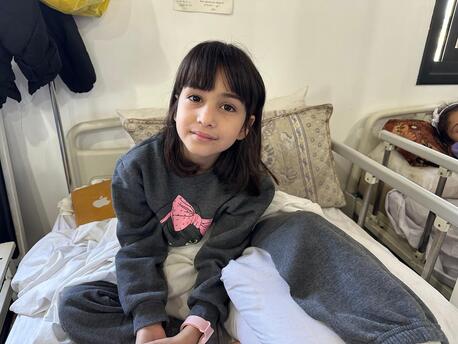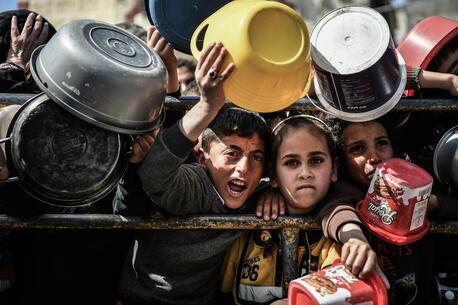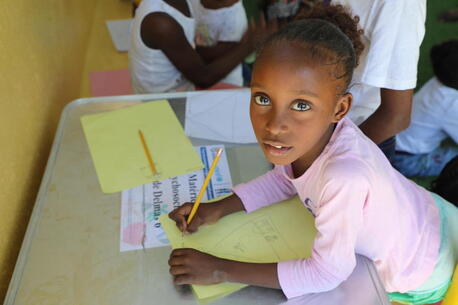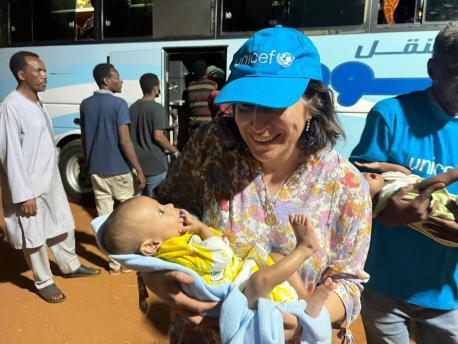
Inside Look: UNICEF Role in Sudan Orphanage Rescue Op
Organizing the safe evacuation of 297 vulnerable children from a state-run facility in the middle of a civil war was a major feat. A behind-the-scenes account.
For UNICEF's team in Sudan, a triumph of humanity and kindness over conflict
For child protection specialists, the stakes could hardly have been clearer. Nearly 300 Sudanese children under age 4 — most of them babies — had been trapped for weeks on the front lines of intense fighting, stuck inside the sprawling three-story building in central Khartoum that housed Sudan’s largest orphanage.
After a month and a half of active conflict, messages from the nurses and volunteers who had remained behind to care for the kids were growing increasingly desperate.
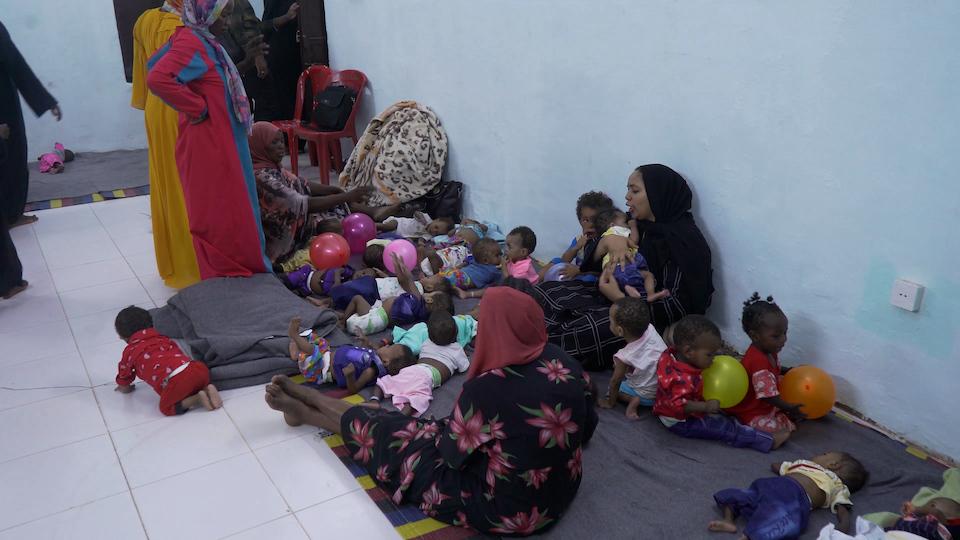
The heat was sweltering, reaching as high as 110 degrees Fahrenheit. Food and water were running out. And children were dying in increasing numbers — over 50 babies had already perished, since the start of the war on April 15, including 13 babies on a single day, May 26.
“They needed to be fed every three hours — there was no one there,” Abeer Abdullah, a doctor on the scene, told a Reuters reporter. “We tried to give intravenous therapy but most of the time we couldn't rescue the children.”
UNICEF had set up temporary operational hubs in safer locations, out of the active conflict zone, to the east and southeast of the city. Narine Aslanyan, a UNICEF emergency manager who had just arrived from New York, huddled with colleagues and partners, helping to make final preparations for an ambitious rescue plan that had been weeks in the making. It had been a race against time, and now that time was running out.
“The situation was desperate,” Aslanyan recalls. “But evacuating 300 children from the middle of a war zone was no joke. Anybody who went to the orphanage had to risk their lives.”
The complex planning behind a UNICEF emergency response
Aslanyan had come to assist a major scale-up of UNICEF's emergency response to the conflict in Sudan: a master plan for meeting urgent lifesaving needs in health, nutrition, water and sanitation, child protection and education. Aslanyan, colleagues and partners had to figure out how many children they would need to reach and estimate funding needs. They needed state-level response plans — plans that detailed specific location-based activities, that analyzed existing partners and evaluated what more would be needed.
The next step was getting out into the field to assess how that scale-up was going, to identify and clear any bottlenecks.
Even before violence erupted in Khartoum on April 15, child protection specialists at UNICEF and other aid agencies were looking for ways to help the children at the Mygoma orphanage find long-term family care, the best and safest way for a child to survive and thrive.
Established in 1961, Mygoma received hundreds of babies a year, mostly from unwed mothers. In Sudanese culture, out-of-wedlock pregnancies carry an extreme stigma. Babies were left on the doorstep unattended and in very poor health, or sent directly from local hospitals. Conditions were cramped, with an average of about 25 children per room, and babies often lying two or three to a crib.
Conditions were dire at the orphanage even before fighting started
As with most institutional care, Mygoma was long plagued by staffing shortages, lack of funding and poor hygiene, the orphanage had seen its share of acute crises before. Many children died from preventable causes on an annual basis.
Now all lives were in danger. Most of the institution’s caretakers joined the more than 1.4 million people fleeing the fighting; only a handful of heroic holdouts remained. As heavy gunfire and shelling echoed through the surrounding neighborhood, staff moved babies away from the windows. When an explosion hit a neighboring building, they evacuated one of the rooms entirely.
The situation was desperate. But evacuating 300 children from the middle of a war zone was no joke. Anybody who went to the orphanage had to risk their lives.
The situation at the orphanage was already top of mind for senior UNICEF staff, led by UNICEF country director Mandeep O’Brien and her deputy, Mary Louise Eagleton. The team quickly established contact with orphanage director Zeinab Jouda and located a precious generator to power the air conditioning and ceiling fans and some fuel to run it.
They packaged therapeutic milk for malnourished babies, and Ready-to-Use Therapeutic Food (RUTF) for older children suffering from severe acute malnutrition. They found a private trucking company and a driver willing to brave the gauntlet of military checkpoints — and unpredictable shelling — to get it all to the children.
The supplies helped, but it wasn’t nearly enough. The caregivers who were still on site — down to just 20 nannies — were overwhelmed.
“If you have a sick child, it's a 24-hours-a-day job to look after a child and feed them,” Aslanyan says. "The only human contact that those babies actually have is during these few minutes that a nurse is feeding them.”
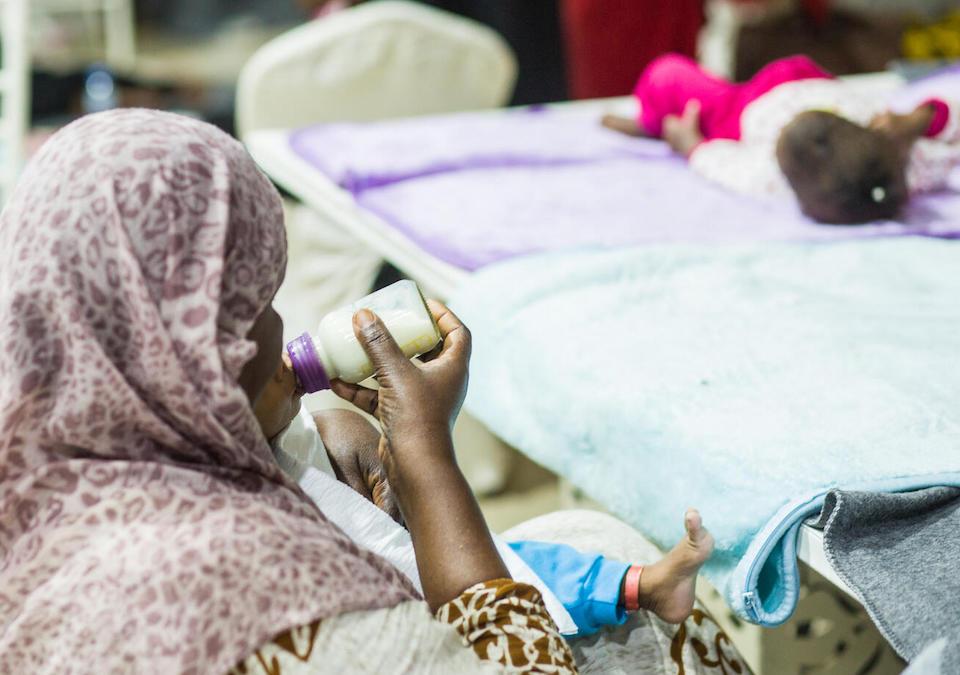
Evacuating the children was a very high risk operation
It was clear the children had to be relocated, but the orphanage was at the front line of fighting and access would be very difficult. Getting them out would be a major logistical feat with many risks.
Not only did UNICEF need to find a trustworthy partner organization willing to brave the front lines and collect the children, they needed a safe place to bring them. They needed sign-off from government officials in Sudan’s ministries of social development and health and other relevant agencies at a time when much of the population was on the run and the nation was in chaos.
By mid-May, dehydration, malnutrition, heat and infection had begun to take a toll, and more babies were dying.
On May 29, Reuters published a special report that was picked up around the world, documenting the courageous efforts of Dr. Abeer Abdullah as she rushed between rooms tending to hundreds of babies and toddlers. In a phone interview with the reporter, Abdullah pled for help, warning that fragile newborns on the ground floor were dying after developing high fevers. The sounds of shelling, gunshots and the wails of children in distress could be heard in the background, the reporter noted.
"I worked as a nanny, nurse and a doctor, feeding one baby, giving antibiotics to some, changing diapers for others," another doctor told the reporter, noting that when she was able to take a rest, she didn't know "how many I would find dead when I woke up."
She said she had collapsed from exhaustion and fever and had to leave Mygoma four days into the war. "God forgive us if we didn't do our best," she said. The scenes of babies lying dead in their cribs have been "terrifying," Heba Abdullah, an orphan-turned-caretaker told Reuters. "It is very painful."
Relocating the children to a place where urgent needs could be met
But it was the reports of a rapidly rising death toll that prompted the greatest alarm at UNICEF. That and the high risk of a disease outbreak, with little means to stop it.
O’Brien, Eagleton and their staff had already secured a commitment from the International Committee of the Red Cross (ICRC) to undertake the actual evacuation, but only after all the other logistics had been arranged. They needed full documentation of all the children, a safe place to bring the children, and they needed government buy-in.
Taking the lead in negotiations with the Sudanese officials was UNICEF’s Child Protection Manager, Osman AbuFatima, a longtime expert on child welfare in Sudan, with deep understanding of the complexities involved and an abiding love of children. Finding a suitable transit facility to receive the children was no easy task. It would have to be big enough to house at least 400 people: the children, plus over 100 full-time staffers for their immediate care, and others such as social workers who would focus on finding safe and lasting family care.
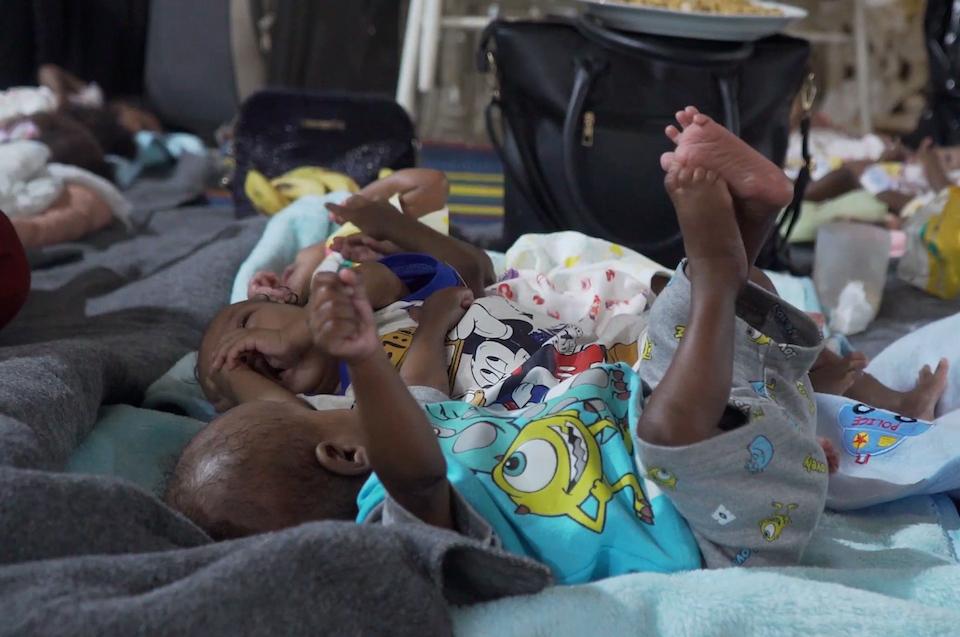
Eventually, Osman AbuFatima found one in Madani, the capital of Jazira province, about 85 miles southeast of Khartoum. The four-hour drive from Khartoum, the UNICEF team decided, was far safer than the far longer journey to Port Sudan, which would have required desperately malnourished children to travel more than 620 miles over two and half a days, and for UNICEF to establish and staff multiple transit points along the way.
Aslanyan had other logistics to sort out, as Madani was where many of those displaced by fighting in Khartoum were now going. There was a rapidly growing IDP camp that needed water, Child-Friendly Spaces, child protection services. Madani was also the launching point for relief operations aimed at getting supplies to Khartoum.
With a temporary transit site in Madani identified, UNICEF immediately set to work preparing the facility for the arriving children — adding toilets and showers and organizing rooms for children and nurses. Staffers brought in water, generators and backup generators. ICRC worked on securing assurances of safe passage from the Sudanese Air Force, the Sudanese Armed Forces and the paramilitary group known as the Rapid Support Forces.
Late on the afternoon of June 7, Aslanyan was in Madani standing with Osman AbuFatima, the Deputy Ministry of Social Affairs from Khartoum, the Minister of Social Affairs of Jazira province, and a wide array of others as five jumbo air-conditioned tourist buses pulled in. "You could see immediately that these children were not okay," Aslanyan says.
An 85-mile bus ride, an emotional arrival
Standing outside in the baking evening heat, she recalls the scene the moment the doors opened and the first arrivals emerged. The nurses who had evacuated the children were emotional, openly weeping as they stepped off the bus, babies in their arms. But the condition of the children left the veteran aid worker and her colleagues speechless.
The babies had already been triaged on the bus. The nurses had tied red ribbons around the arms or legs of the 32 children deemed most malnourished — and those children were immediately transported to the hospital — but even those without ribbons appeared wasted.
“When the children started getting out of the buses, I was shocked,” Aslanyan says. “I have worked in many, many projects where you have severely malnourished children. But this was five or six buses – and when the children and babies appeared, every single one was malnourished ...They were completely wasted. Many of them were babies, and very, very light, one kilo. There was barely anything left. No body mass. All you saw were their burning eyes.”
You could see immediately that these children were not okay. They were completely wasted. Many of them were babies, and very, very light, one kilo. There was barely anything left.
Osman AbuFatima, UNICEF's child protection manager who had worked around the clock to prepare the rescue, would later recall that first day as "one of the most difficult days of my professional life." The scale of the operation and vulnerability of children "was too much for anyone to handle."
With the rehabilitation of the temporary facility not quite finished, UNICEF decided on an interim solution for the first few days: a large recreational space, used in happier times for weddings, the largest facility in the area with air conditioning.
As the tattered group of survivors proceeded into the massive reception hall, medical teams from the Ministry of Social Affairs and UNICEF rushed to examine the children, identifying those who needed immediate transfers to an emergency room or another medical facility where they could be stabilized. Meanwhile the UNICEF team rushed to critical support to those who remained at the center.
“When the babies arrived, saving their lives was imperative,” Mohamed Almugtba Khider, UNICEF’s health and nutrition officer would later recall. “Every moment counted. It is only with the efforts of all the medical teams and volunteers that we kept children alive overnight.”
For two days, medical teams worked nonstop
For the next two days, the medical teams worked nonstop, examining the children, identifying health issues and needs. Others from UNICEF helped ensure every child was documented — some of the new arrivals didn’t have birth certificates or names.
The work to get them properly documented continued for weeks. By the time the buses returned to take the children to their new temporary home two days later, the older children were up and running around, doing what children do — playing. The priority now is finding lasting family care.
There is plenty to be grateful for, Aslanyan says: "This is a moment of triumph of humanity and kindness over the devastation of conflict."
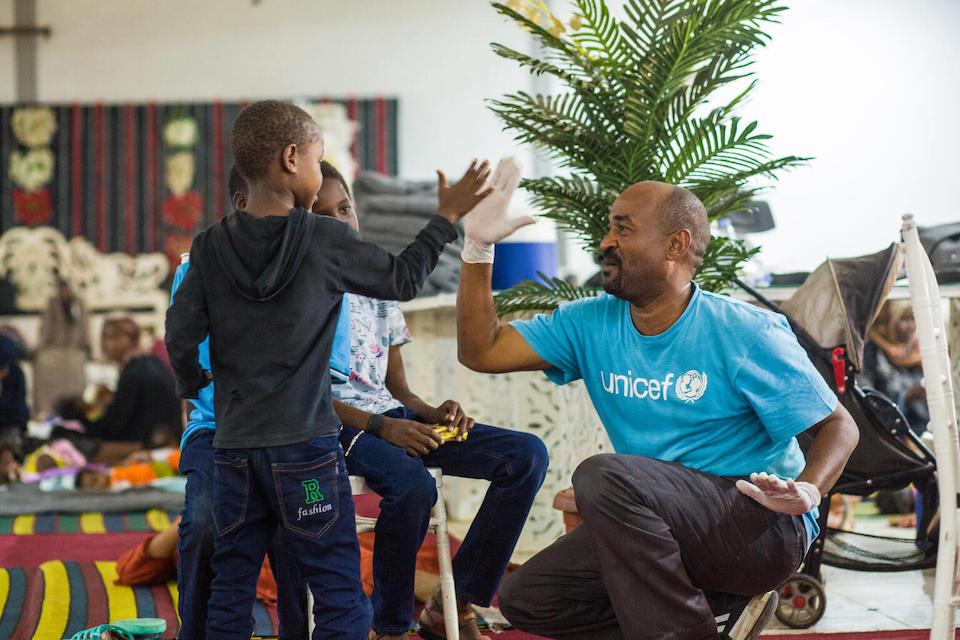
Learn more about how UNICEF is responding to conflict in Sudan, reaching children and families with lifesaving support.
UNICEF responds to an average of 300 humanitarian emergencies every year. Support UNICEF's global response efforts. Donate today.
